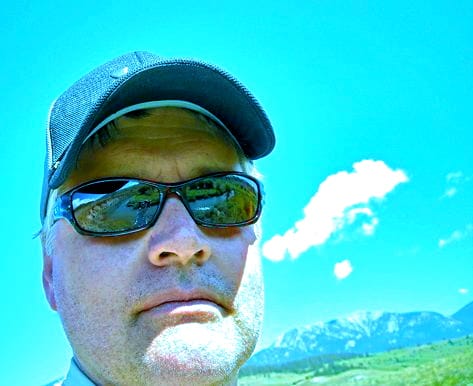Blog vs Podcast vs YouTube: Choosing Right Platform in 2024
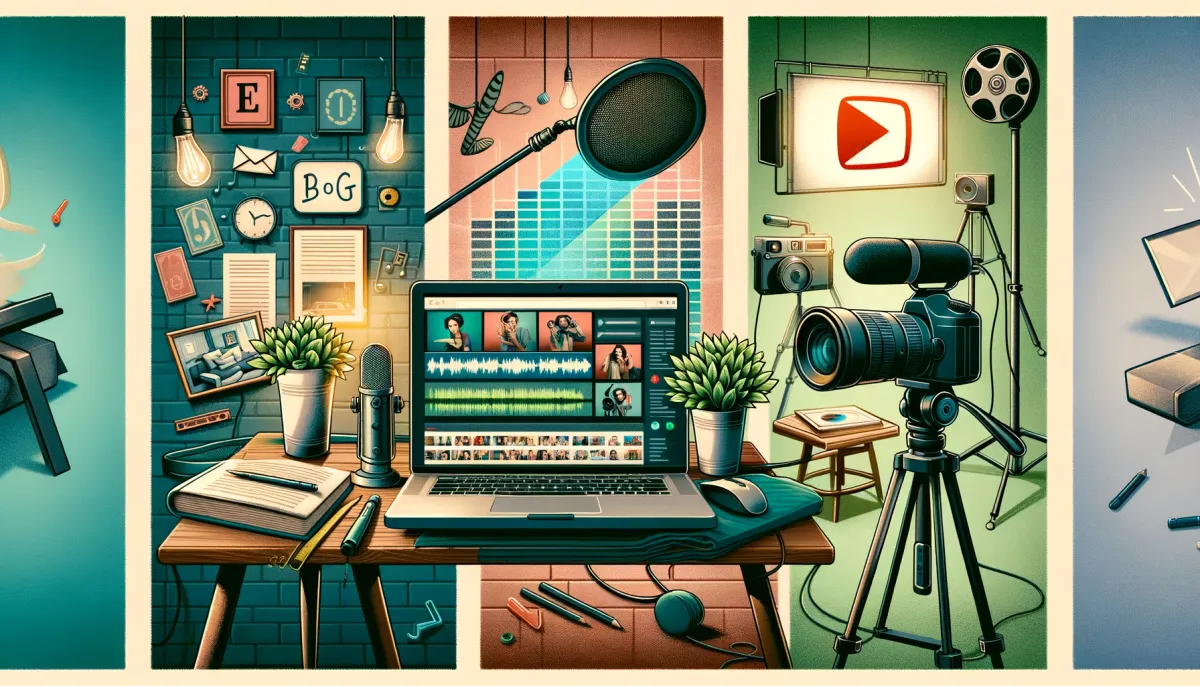
When I think about creating content online, three major platforms come to mind: blogging, podcasting, and YouTube. Each has its own unique advantages, and choosing the right one can really depend on what you're looking to achieve. Truthfully, with the right combination of tools and workflows, you should be able to be a content creator in all three spaces if you want to.
If I'm aiming for something that's text-based and searchable, where I can express my thoughts in detail, a blog might be the best bet. Blogs are excellent for providing written content that can easily be found on search engines and are great for those who enjoy reading at their own pace. I will say that at the time of this writing (post March 2024 Google Core Update) the viability of new niche blogs is somewhat in question.
On the other hand, if I want to connect with my audience through conversation and storytelling, I might lean towards podcasting. It's really cool how podcasts allow for a connection with listeners in a more personal way because they're hearing my voice, and it's a format that can be consumed on the go.
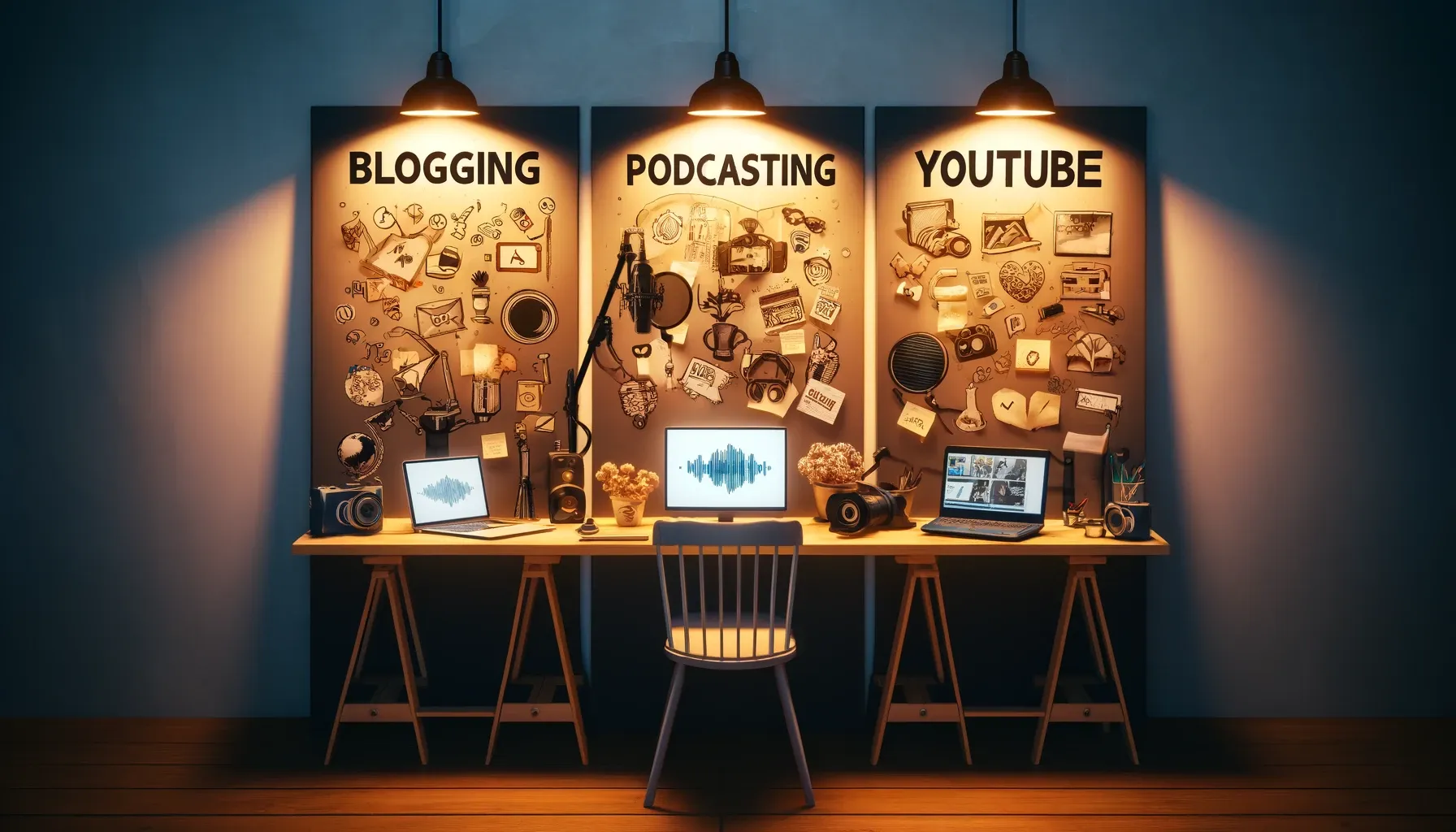
Meanwhile, YouTube stands out if I'm drawn to the idea of making visual content. It's a powerhouse when I want to combine visuals with my message, and it's perfect for tutorials, reviews, or just entertaining videos.
Plus, it has a huge audience, which means there's the potential to reach lots of people. The catch is that it can take a lot of time and energy to make high-quality videos, but when I do, the impact can be really significant.
Each time I weigh out my options, it's clear that all three platforms have their perks—it just comes down to what suits my style and goals the best.
Defining the Basics
When I think about sharing my ideas online, I've got to understand the types of platforms available to me. Each has its own flavor and suits different types of content, from the written word to engaging videos and immersive audio experiences.
What Is a Blog?
Blogs are my go-to for written content. They are essentially websites where I create and publish articles regularly. A blog lets me dive into topics in-depth with text and images. It's great for sharing my knowledge, boosting my profile, and improving my site's search engine optimization (SEO) since search engines love fresh, relevant content.
- Platform: Website or blogging platforms
- Content Creation: Regular articles, posts
- Content Type: Written, visual
Understanding Podcasts
Podcasts are all about audio content. Think of them as radio shows for the internet age. When I host a podcast, I talk about topics I'm passionate about or interview fascinating people. Listeners can tune in during their commute, workout, or as they wind down for the day.
- Platform: Podcasting services
- Content Creation: Audio episodes
- Content Type: Audio
Understanding YouTube
YouTube is THE platform for video content. Here, I can be a director, actor, and editor all in one, creating videos that educate or entertain. YouTube videos can range from tutorials to vlogs, and they let me connect with viewers visually, which is super engaging.
- Platform: YouTube
- Content Creation: Videos
- Content Type: Visual content combined with audio
Each platform offers a unique way for me to express myself and reach an audience in a way that matches my creative strengths and their media consumption preferences.
Technical Requirements
When kicking off your online content creation journey, one of the first steps is getting the right gear. Whether you're writing, recording your latest podcast episode, or filming for YouTube, you'll need specific tools to get the job done.
Blogging Equipment
For blogging, it's pretty straightforward. Here's what I typically use:
| Equipment | Software |
|---|---|
| Laptop/Desktop | WordPress/Ghost.org |
| Keyboard | SEOWriting.ai/KoalaWriter/NeuronWriter |
| Mouse | Grammarly/HemingwayApp |
The essentials for blogging are a reliable computer and some solid word processing and AIWriter software. And don't forget about Grammarly which ensures your writing is mistake-free and clear. Finally, the HemingwayApp makes sure your content is readable.
Podcast Setup
Now, podcasts are a bit different. You really can't skimp on audio quality. Here's my setup:
- (A high quality) Microphone
- Audio Editing Software
- Podcast hosting:
I've got a trusty microphone that doesn't break the bank but still captures my voice clearly. A pop filter's a lifesaver for cutting out those annoying popping sounds. For editing, programs like Audiate or Descript allow you to edit in a word processor-like environment. I personally use Audiate to edit my podcast Content Superhero:
YouTube Filming Gear
Filming for YouTube is where the fun's at! Here's the gear I'm using:
| Equipment | Software |
|---|---|
| Fuji X-S10 w/ 18-55mm Fujinon Lens | Camtasia |
| Peak Design Tabletop Tripod | Davinci |
| Elgato Lighting Kit |
My camera isn't the fanciest, but it shoots in full HD, which is what matters. Good lighting can make any space look professional, and a sturdy tripod keeps everything steady. For splicing and dicing those clips, Camtasia combined with Audiate is my go to software and is great for my software tutorials.
Content Creation Process
When I approach content creation, the focus revolves around tailoring my process to fit the medium—be it blogging, podcasting, or producing videos for YouTube. Each requires a distinct set of skills and a different production path.
Writing for Blogs
For writing blogs, my routine starts with brainstorming ideas and then moving on to a draft. Even though I use AI writing software, it still involves plenty editing. The editing process is where I share my expertise and unique point of view. I make sure my posts are consistent in quality and tone, knowing readers rely on a steady stream of content.
Recording Podcast Episodes
Recording podcasts, on the other hand, taps into my speaking abilities. I spend time on the show notes to ensure I'm clear and engaging. Recording can be a multi-step affair with sound checks and sometimes reshoots for better clarity. The editing phase is crucial to eliminate unwanted noise and ensure smooth transitions.
Producing YouTube Content
Lastly, producing YouTube content adds a visual dimension to my storytelling. It's not just what the audience hears but also what they see. This means I have to be adept at both video recording techniques and video editing tools. The editing here is more intensive, often requiring cuts, stock video clips, and attention to detail to maintain viewer engagement through visuals.
Audience and Reach
Choosing the right platform means understanding who I'm talking to and how best to reach them. Let's break it down by platform.
Building a Reader Base
To grab a reader's attention, I need to provide value and maintain consistency. High-quality content that solves problems or entertains is key. I've learned that engaging with my audience through comments and social shares helps build a community and fosters loyalty. Collecting email addresses for custom newsletters plays a big part in building community.
Growing Podcast Listeners
Developing a podcast audience is about creating compelling audio experiences. I find that shorter, more frequent episodes can help keep listeners engaged. I typically do solo podcasts although I plan to add interviews in the future.
Expanding YouTube Viewership
Increasing my YouTube subscribers takes more than just posting videos; it requires optimizing content for YouTube's algorithms. Using the right keywords in my titles and descriptions helps make my videos more discoverable, leading to more views and a wider reach. I specifically use a tool call Castmagic to help me get more reach for my videos:
Search Engines and Visibility
When I'm deciding between blogging, podcasting, or starting a YouTube channel, I think about how people will find my content. Each platform interacts with search engines in a unique way that affects the visibility of what I create.
Blogging and SEO
Google, Bing, DuckDuckGo and Perplexity loves fresh, relevant content, and blogs are great for providing search engines that. By regularly updating my blog with keyword-rich posts (DON'T keyword stuff), I increase my chances of driving organic traffic to my site. The more I optimize my content for search engines, the more visibly I place myself in front of a potential audience.
Podcast Discoverability
Podcasts, on the other hand, rely on a mix of factors for discoverability. Major platforms like Apple Podcasts and Spotify do have their own search functions, but they're not as sophisticated as Google. I make sure to use descriptive titles and keywords in my podcast metadata to help potential listeners find my show. However, I've learned that promoting my podcast across social media and on my blog can significantly boost my visibility.
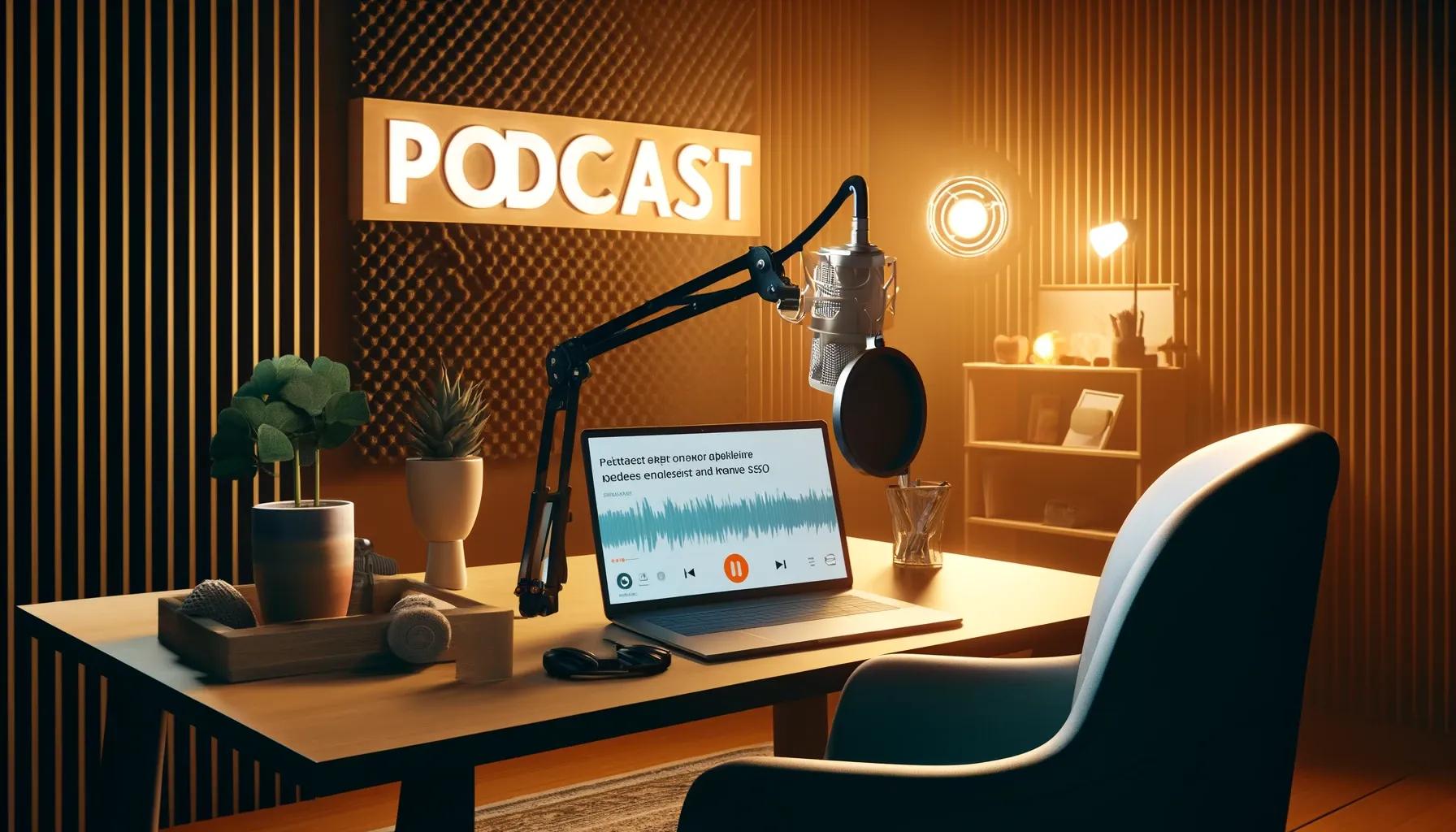
YouTube and Search Algorithms
With YouTube, I'm at the mercy of the platform's search algorithm. To improve my visibility, I focus on key elements like the video title, description, tags, and even closed captions. Keywords are essential here, too, because YouTube is the world's second-largest search engine. High engagement rates (like likes, comments, and subscribes) tend to signal the algorithm that my content is worth a higher ranking, which in turn can increase my organic reach.
Monetization Strategies
When I'm crafting content, it's vital for me to consider how I can monetize my efforts. Each platform offers unique ways to make money, but the right approach hinges on my audience and business goals.
Earning Through Blogging
Blogging can be lucrative if I leverage the right tools. I often use affiliate links, offering products related to my blog's niche, and get a commission for each sale made through my link. I also include ads on my site; as my traffic grows, so does my ad revenue.
Podcast Monetization
For my podcast, sponsorships are the bread and butter. I strike deals with companies to plug their products during episodes. Additionally, I can encourage my listeners to support me through donations or offer them premium content for a subscription fee, which adds a steady stream of revenue. Some podcast hosts like the one I use (Podbean.com) have easy ways that you can offer spots on your podcasts for potential sponsors and ads.
Generating Income on YouTube
YouTube monetization is multifaceted. I can earn money through ads played on my videos once I meet certain viewership criteria. Beyond ads, I create sponsored content and use affiliate links in video descriptions. Merchandise shelves and channel memberships are other ways I can boost my income on this platform.
Marketing and Promotion
When I'm looking to boost visibility and draw in an audience, I always focus on understanding the nuances of marketing and promoting content across various platforms. Whether you're blogging, podcasting, or creating YouTube videos, each channel requires a unique approach to effectively reach and engage with people.
Blog Marketing Techniques
To drive traffic to my blog, I rely heavily on SEO best practices. This means carefully selecting keywords, creating quality backlinks, and writing valuable content. I also make use of social media to share my blog posts, often with catchy headlines and appealing graphics to draw clicks. Ensuring the blog is mobile-friendly is another key point, as a significant portion of readers access content on their phones.
Promoting Your Podcast
For my podcast, social media plays a vital role again. It's perfect for sharing snippets or intriguing quotes from episodes. I also learned that guest appearances can be a big win for cross-promotion. I find that I can increase my podcast's reach if I collaborate with guests who have their own following, as this exposes the podcast to a larger audience potentially interested in my content.
YouTube Channel Growth Hacks
YouTube's algorithm is a beast of its own, focusing on watch time and engagement. I optimize my video titles, descriptions, and tags to be search-friendly. A great trick I've learned is to encourage viewers to engage by asking them to like, comment, and subscribe. Another tactic is to create playlists to keep people watching my content longer. And it's not just about what is within YouTube. I share my videos across all social media platforms to tap into different audience pools.
Keeping up with these marketing tactics has allowed me to not just throw content into the void, but to actually build a community and see a real increase in engagement across my blog, podcast, and YouTube channel.
Pros, Cons, and Suitability
Before we dive into the details, let me tell you straight up: choosing between blogging, podcasting, and YouTube comes down to what you’re good at and what your goals are. I'll give you the scoop on the good and tough parts of each, and who they fit best.
Advantages of Blogging
- Pro: Starting a blog has a low monetary barrier to entry. All you need is a domain and some hosting to get the ball rolling. Plus, people can find your blog posts months or even years later.
- Con: To stand out among the millions of blogs, I've got to be consistent and bring my A-game in writing.
Blogging suits folks who love writing and have a knack for SEO. If you're the type to think in keywords and have patience for building authority, blogging could be your best bet.
Challenges in Podcasting
- Pro: Podcasts grip listeners like nothing else. People tune in to my voice for a long haul, way longer than they'd stick around reading a blog post.
- Con: Prepping for a podcast takes time and effort. I spend hours recording and editing before anyone hears a peep.
If you've got an ear for sound and love a good conversation, podcasting might tickle your fancy. But remember, it’s a marathon, not a sprint, and staying consistent is key.
The Ups and Downs of YouTube
- Pro: Videos can be crazy good for building a personal connection. Seeing my face and hearing my voice creates a bond with my audience fast.
- Con: Quality videos aren't child's play—they take a lot of gear and time to produce.
YouTube is a match for you if you've got a flair for the dramatics and can work a camera. It's perfect for those who have a specific niche and want to become a visual authority.

Choosing between blogging, podcasting, and YouTube is all about playing to your strengths and finding what fits your style and preferences. Each platform has its own set of perks and challenges, so pick the one that feels like home to you and your business.
Platform-Specific Challenges
When it comes to choosing a digital platform for content creation, each option has its own set of hurdles. Let's take a peek at what you might face with different platforms.
Squarespace Vs. WordPress Vs. Podcast Hosting Platforms
WordPress is the most popular content management system for blogging. Squarespace is another option along with a variety of static HTML platforms.
For podcast hosting, I use a Podbean, but there are many highly regarded podcast hosts to choose from.
Video Hosting and YouTube Alternatives
Now, running a YouTube channel can be super rewarding but it's not without its headaches. YouTube's got the audience, but it also has strict guidelines and heavy competition. That's why some creators look at alternatives for hosting videos, like Vimeo. The trade-off? Those platforms might not have as big an audience, and they sometimes charge money. Plus, keeping my videos high-quality means I need good gear and editing software, which isn't cheap.
Interactivity and Community
Alright, let's dive into how interactivity and community can vary across blogs, podcasts, and YouTube. This stuff matters because they're key to keeping people engaged and feeling like they're a part of something special.
Engaging Blog Readers
When I'm writing blog posts, comments are gold. They let me connect directly with readers and learn what they love. I encourage comments by ending posts with a question, and it's a pretty neat way to start a conversation. Guests and interviews in a blog can also spice things up, offering fresh perspectives and knowledge.
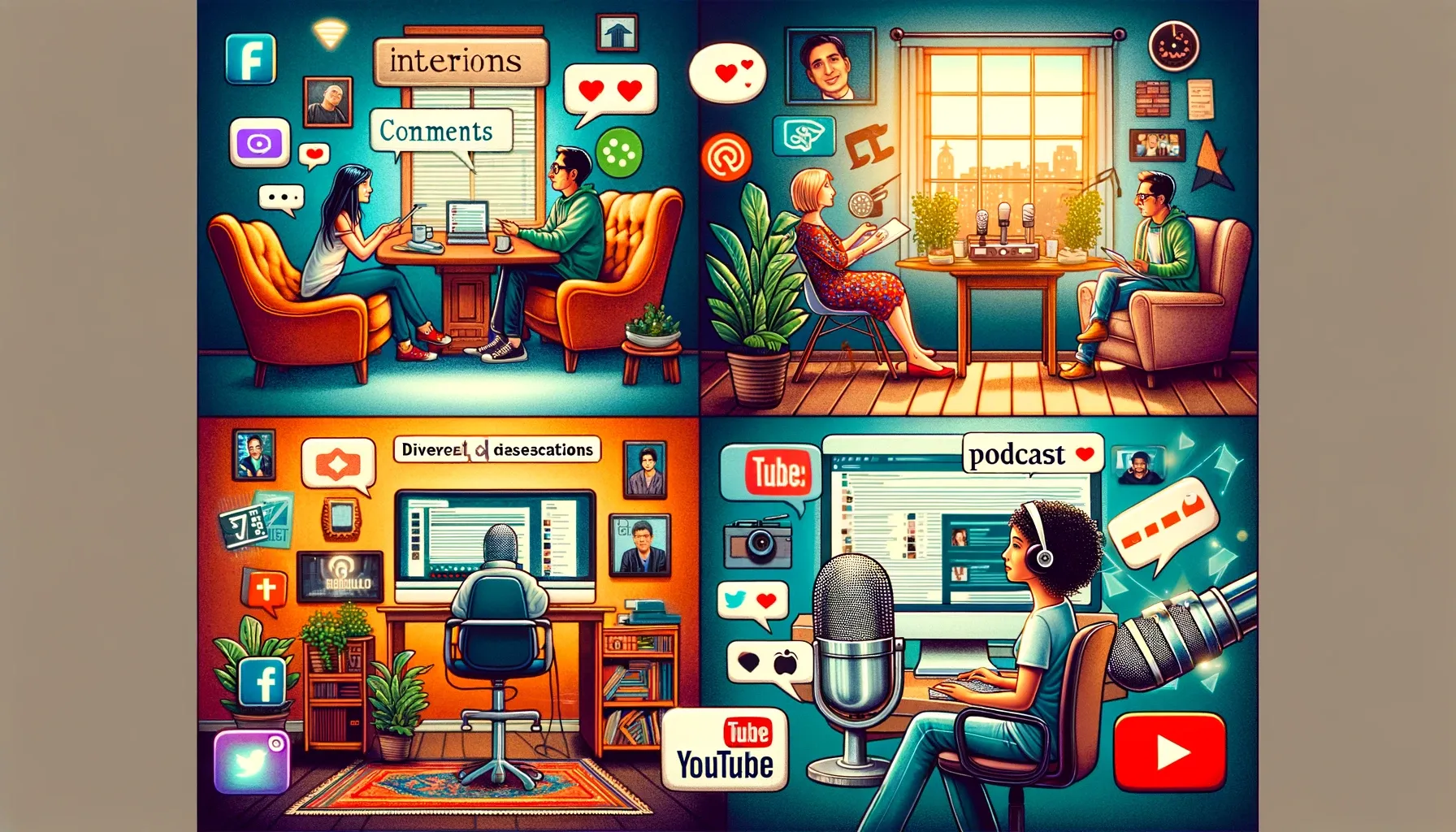
Podcast Communities
Podcasts give a vibe of being in someone's living room having a chat. Interacting through social media or a dedicated podcast forum can help listen to the listeners. Having a guest on my show, or doing interviews, is like inviting someone over for coffee - it helps forge a personal connection and keeps the learning and discussion buzzing.
Creating Community on YouTube
YouTube's all about that visual connection. When I upload videos, I use the comments section to chat with viewers. I love when they share insights or ask questions - it's dynamic, and every video can spark a whole new dialogue. Bringing on a guest or hosting interviews is also great for adding variety and expertise that my subscribers get to see and learn from. It's like we're all learning together.
Repurposing and Multi-Platform Presence
When I chat with fellow content creators, I constantly emphasize the savviness of using a single piece of content across multiple platforms. It's like getting several dishes out of one recipe – super efficient! I use Castmagic for repurposing Podcast and YouTube content.
Transforming Blog Posts
I've found that blog posts can be a goldmine for repurposing. Take a killer post of mine, for instance, and with a few tweaks, boom! It's a script for a podcast episode or a YouTube video. It really breathes new life into my written words, reaches more folks, and maximizes my message.
- Blog into Infographics: Summaries in a visual format are a hit on platforms like Pinterest or Instagram.
- Blog to Newsletter: A brief recap can hook subscribers looking forward to more insights.
From Podcasts to Other Mediums
Now, let's talk podcasts. My voice carries my brand, and recording once gives me content that I can slice for different places. A single episode can lead to a blog summary or social media sound bites.
- Podcast Clips on Social Media: Perfect teasers to pull in new listeners from Twitter or Facebook.
- Podcast to Blog: Transforming a dialogue into a searchable text post can expand my reach immensely. For more insights on the impact of this strategy, consider the perspectives from WESFED.
Leveraging YouTube Content
YouTube's been a blast for me. When I create video content, I think of how segments can stand alone for Instagram stories, or how the whole video can be embedded in blog posts. It's about tapping into my existing materials and spreading it across the digital sphere.
- YouTube to Blog: Embedding videos in blog posts can give a visual kick and help with SEO.
- Video Highlights for Social Media: Shareable moments can become viral and highlight my main points. For a more detailed comparison on the effectiveness of repurposing YouTube content, you can jump into the analysis at Side Hustle Approach.
Final Insights and Conclusions
Choosing between blogging, podcasting, and YouTube for my digital platform was a tough call. I had to think about who I wanted to reach and the kind of content I was excited to create. Let me give you the lowdown on what I learned.
First up, blogging—it's all about the written word. It's great if you like to express yourself in writing and you've got a knack for SEO. Blogs can help you rank on search engines, which is awesome for pulling in traffic organically.
Podcasting is a whole different ballgame. It's perfect if you're more into chatting and telling stories. The competition isn't as fierce as blogs or YouTube, so that's a plus. And I've noticed that my listeners really get into the episodes—it's like we're pals and they're tuning in to catch up.
But YouTube takes the cake when it comes to a visual experience. It's a powerhouse for creating a strong connection with my audience. Videos can be super engaging, but they take a bit more oomph to produce, you know?
Here's the skinny:
- Blogging is great for generating leads and sticking to a budget.
- Podcasting is fab for building relationships and loyalty with my ideal customers.
- YouTube rocks for creativity and if I've got visuals that just need to be seen.
Each one has its perks and fits different goals and styles. I had to dig deep into what I wanted and how much time I could commit. So, if you're about to dive into the online world, think about where your strengths lie and where your peeps hang out. Your choice is all about matching your vibe with the right platform.
